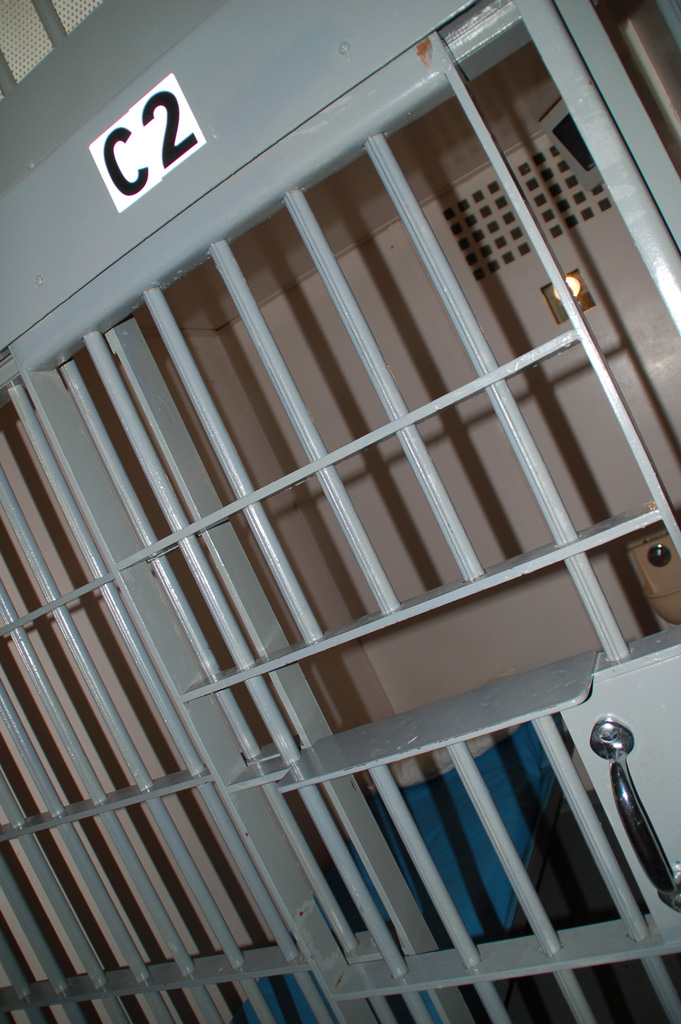1,400 California 'Lifers' Granted Parole In Last Three Years
Convicted killer and Charles Manson follower Bruce Davis was granted parole after his 28th parole suitabitity hearing on Wednesday. Davis was granted parole twice earlier in 2010 and 2012, only to have his parole revoked by the governor on the previous two occasions.

Families of Davis's victims and many others have one question: why now?
In an unprecedented change, 1,400 California inmates originally sentenced to life in prison have been released on parole over the last three years. This trend coincides with Jerry Brown taking office, and follows a period where former governor Arnold Schwarzenegger approved the parole of only 557 prisoners over six years. Approximately 80 percent of lifers have been convicted of murderer, while the rest are primarily kidnappers and rapists.
Prisoners serving indeterminate sentences are eligible for parole hearings one year before their minimum eligible parole date. During the hearing, inmates must demonstrate that they no longer pose "a continuing danger to society."
In 2008, a court order changed the standards for releasing an inmate on parole to exclude only individuals who present a “current, unreasonable risk of danger.” If they are found unsuitable, another hearing to assess their status may be held anytime from 3-15 years in the future, at the discretion of the panel.
Conversely, when prisoners are found deserving of parole, the decision is brought before the governor, who may do one of three things: request that the panel review their decision, approve the decision, or allow the parole decision to stand through inaction. When the inmate in question has been convicted of murder, the governor can modify or deny the decision at his own discretion.
READ MORE: California Prison Reform: Assessing Realignment
During his current tenure as governor, Brown has confirmed 82 percent of parole decisions, resulting in a dramatic increase in the number of inmates released. When Schwarzenegger served as governor, by contrast, he reversed 73 percent of the board’s rulings, a markedly disparate clip.
Many speculate that Brown’s leniency in affirming parole decisions is a result of court rulings ordering California to drastically reduce the overcrowding of state prisons. This decision came in 2011, and is an effort to mitigate flagrant human rights violations in state facilities that stand at 144 percent capacity.
The governor’s office, however, maintains that court pressures concerning overcrowding have no bearing on parole decisions.
“If an individual is eligible for parole and the board determines they are no longer a threat, the law says they must be paroled unless there is firm evidence indicating they are still a threat," according to Brown spokesman Evan Westrup.
This new approach taken by the Brown Administration follows additional court orders to lessen rigid parole requirements that have resulted in those convicted of murderer spending nearly twice as long in prison over the last 20 years. The order urged parole boards to consider a prisoner’s behavior while incarcerated, as well as the amount of community service accumulated rather than just judging the severity of the initial crime.
READ MORE: CA Prison Reform: Meet The Stakeholders
Despite the governor’s adamant assertions that the rise in the number of inmates being granted parole is solely due to new, less strict standards, many argue that it is a direct result of overcrowding.
“It’s been a remarkable and unexpected change," said Johanna Hoffman, a lawyer who has been acting as legal representation for hundreds of lifers for six years. "The overcrowding issue has a huge amount to do with it.”
Regardless of what the true motives may be, the potential consequences that could arise from an influx of ex-cons being assimilated back into society are troubling to many citizens. Victims of crime claim that the releases are a blatant injustice to the victims and their families, and fear that they pose an irreconcilable danger to the public.
READ MORE: First California Prisoner Resentenced
“This is playing Russian Roulette with public safety," claims Christine Ward, executive director of the Crime Victims Action Alliance. She vehemently disagrees with the new practice, warning that "this is a change of philosophy that can be dangerous."
A Stanford study on recidivism rates, however, addresses this concern.
The report notes that, while information is limited, incidence of crimes committed by released lifers is minuscule, and recidivism risk when compared to the larger prison population is minuscule as well. Additionally, no lifer who has been released on parole has committed murder since leaving prison.
This study suggests that Brown’s release of prisoners is not an irresponsible oversight, but rather a step towards fixing the overcrowding problem as well as finding a more successful process to determine if a convict has been rehabilitated. Because the very nature of incarceration in the United States aims to rehabilitate criminals, it seems counterproductive to keep those serving life sentences trapped in the parole system with no hope of reentering society. If prisoners resign themselves to life in prison because they believe they have no chance of getting out, then there is little incentive for them to take responsibility for their crimes.
Unless Governor Brown loses his upcoming bid for reelection, we can expect the number of lifers released on parole to continue rising in the coming years. Until harsher standards are imposed on those seeking parole or prison populations decrease significantly in the near future, then there is nothing pointing to an impending change in policy.
Reach Staff Reporter Kevin Litman-Navarro here.



